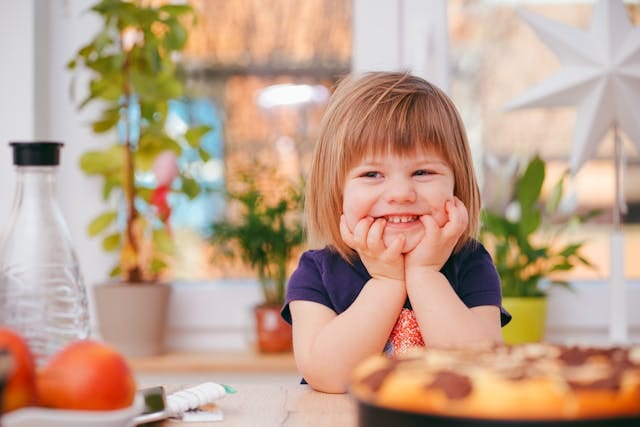how to discipline a child
Alternatives to punishment: Positive reinforcement and reward systems

how to discipline a child : In child-rearing, it is common to establish rules and boundaries to promote desirable behavior. Traditionally, negative punishment has often been used to discourage undesirable behavior, with parents and educators aiming to correct mistakes and guide children towards proper conduct. However, there are alternative methods that can be more effective and foster a positive educational environment.
Instead of focusing on punishment, reward systems and positive reinforcement can be utilized to motivate children to behave well. These methods rely on the principle of rewarding good behavior rather than punishing bad behavior. For instance, simple rewards like praise and hugs or granting extra playtime for following the rules can be highly effective. Additionally, a star or point system can be implemented, where the child earns points for good behavior and later exchanges them for bigger rewards, such as choosing a favorite activity or receiving a new toy.
Positive reinforcement isn’t limited to material rewards. It can also include social and emotional reinforcement, such as providing special attention or quality time with parents. These methods boost self-esteem and naturally encourage children to adopt positive behaviors, reducing the need for traditional punishment.
Moreover, these alternative methods can be more effective in the long run, as they focus on building a positive and trust-based relationship between the child and the caregiver. When children feel valued and respected, they are more likely to cooperate and comply with established rules.
how to teach a child respect and discipline

Instead of anger and punishment, take a step forward
There are still many ways you can approach situations without resorting to punishing your child. Remember that when your child behaves in an “annoying” manner, they are grappling with genuine emotions that are overwhelming them at that moment. This might manifest as a tantrum, shouting, or rude talk. It is better to try and understand the reason behind your child’s reaction at that moment. Is your child tired? Was the disappointment too great because something was not allowed? Perhaps they are experiencing a period of stress and are therefore reacting more intensely?
Once you identify the reason, try to explain to your child why they feel this way. Your child might not even be aware of their own emotions and the reasons behind them. By explaining and acknowledging their feelings, you can provide them with understanding and comfort, which can help them calm down. After that, you can calmly explain to them what is considered desirable behavior and what is undesirable behavior, along with the consequences of each. If you find it difficult to maintain your patience, take a time-out to collect yourself, then return when you are able to respond to your child in a calm manner.
If your child allows it, it can be very helpful to hold them for a while. This might seem counterintuitive after they have done something wrong, but it helps regulate their emotions and gives them the feeling that you are there for them no matter what. This embrace helps many children to calm down, and afterward, you can talk to them more effectively.
how to discipline a child without yelling or hitting

what is positive discipline
Disciplining a child without yelling or hitting is both effective and beneficial for their emotional and psychological development. Here are some strategies to discipline a child positively:
1. Set Clear Expectations and Rules
- Communicate Clearly: Ensure your child understands the rules and what behavior is expected of them.
- Consistency: Be consistent in enforcing rules so the child knows what to expect.
2. Use Positive Reinforcement
- Praise Good Behavior: Acknowledge and reward positive behavior with praise, attention, or small rewards.
- Reward Systems: Implement a reward system like stickers or tokens that can be exchanged for privileges.
3. Natural Consequences
- Allow Consequences: Let children experience the natural consequences of their actions (within safe limits). For example, if they forget their homework, they experience the result of that at school.
4. Logical Consequences
- Related Consequences: Apply consequences that are directly related to the misbehavior. If they spill their drink, they help clean it up.
5. Time-In Instead of Time-Out
- Time-In: Spend time with the child to help them calm down and discuss their feelings and behavior. This fosters a supportive environment.
- Reflection Time: Encourage the child to take a moment to think about their actions and how they can improve.
6. Redirect Behavior
- Distract and Redirect: When a child is misbehaving, redirect their attention to a different, positive activity.
7. Use “I” Statements
- Express Feelings Calmly: Use “I” statements to express how their behavior affects you. For example, “I feel upset when toys are left all over the floor because someone could trip and get hurt.”
8. Problem-Solving Together
- Collaborate on Solutions: Involve the child in finding solutions to their misbehavior. This teaches responsibility and decision-making skills.
9. Model Desired Behavior
- Be a Role Model: Demonstrate the behavior you want to see in your child. Children learn by observing adults.
10. Establish a Routine
- Structured Environment: A predictable routine helps children feel secure and understand what is expected of them.
11. Use Gentle Physical Guidance
- Guide Gently: If a child is having trouble, gently guide them to the desired behavior without using force.
12. Give Choices
- Empower with Choices: Offer limited choices to give the child a sense of control. For example, “Do you want to clean up the toys now or after your snack?”
13. Teach Emotional Regulation
- Identify Emotions: Help the child name and understand their emotions.
- Coping Strategies: Teach them ways to calm down, like deep breathing or counting to ten.
14. Stay Calm
- Maintain Composure: Keep your emotions in check to model self-control. A calm approach helps defuse tense situations.
15. Follow Through
- Consistency in Consequences: If a consequence is necessary, follow through with it to reinforce learning.
Examples of Implementing These Strategies:
- Scenario 1: Your child refuses to do their homework.
- Solution: Explain the importance of homework and set a specific time each day for it. Offer praise when they complete it on time.
- Scenario 2: Your child throws a tantrum in the store.
- Solution: Stay calm and take them to a quiet spot to help them calm down. Discuss their feelings once they are calm.
- Scenario 3: Your child hits a sibling.
- Solution: Separate them and explain why hitting is unacceptable. Ask them to express their feelings in words instead and encourage them to apologize.
These methods focus on teaching children self-discipline, empathy, and problem-solving skills, which are essential for their development and help build a respectful and positive relationship between parent and child.
The Harmful Effects of Negative Punishment on Children
Negative punishment, such as time-outs, yelling, or physical punishment, may appear effective in the short term because it can temporarily suppress undesirable behavior. However, a deeper examination of these punishments reveals numerous drawbacks and long-term negative effects. Firstly, such punishments can lead to feelings of fear, frustration, and insecurity in the child, adversely affecting their psychological and emotional development. Instead of respecting their parents, the child might develop fear towards them, weakening family bonds and leading to a lack of trust and connection between the two parties.
Furthermore, negative punishments teach the child what to avoid rather than what to do, focusing their attention on avoiding punishment instead of developing an internal motivation to display good behavior. This can hinder their personal and social growth and impact their ability to make sound decisions based on their own values and principles. Instead of acting out of an intrinsic desire to do good, the child begins to behave out of fear of punishment, undermining their self-confidence and making them less willing to take risks and learn from their mistakes.
Rewards versus Punishments
Instead of relying on negative punishments, adopting reward systems and positive reinforcement can be more effective in encouraging desirable behavior in children. These systems not only promote good behavior but also help build a positive and loving relationship between parents and the child. There are various reward systems that can be effective; here are some examples:
Reward Tokens
In this system, the child earns special tokens (such as stickers, points, or coins) by displaying desirable behavior. These tokens can then be exchanged for tangible rewards like extra playtime, an outing, or a small gift. This system helps children understand that good behavior comes with rewards and encourages them to continue performing well.
Behavior Chart
A behavior chart is a visual tool that helps the child see their progress in improving their behavior. The child can earn stickers or stars on the chart each time they exhibit desirable behavior. Upon reaching a certain number of stickers, the child can receive a reward, such as choosing a fun activity or spending special time with the parents. This approach makes the learning process enjoyable and interactive.
Praise and Recognition
Positive feedback and recognition are essential tools for promoting good behavior. It is crucial for parents to regularly notice and praise good behaviors. Rewards can be as simple as encouraging words and praise, certificates of achievement, or even a small celebration of the child’s accomplishments. These rewards help build the child’s self-confidence and motivate them to continue displaying good behavior.
Support and Positivity
Adopting these positive reinforcement strategies can create a nurturing and supportive environment for the child. By focusing on positive behavior and offering consistent encouragement, parents can foster an atmosphere where the child feels valued and understood, ultimately leading to better long-term outcomes in behavior and emotional health.



how to discipline a child who doesn’t care about consequences
Disciplining a child who seems indifferent to consequences can be challenging, but it’s important to understand that every child is different and may respond to various approaches differently. Here are some strategies to help effectively discipline a child who doesn’t seem to care about consequences:
1. Understand the Root Cause
- Observe and Communicate: Pay close attention to the underlying reasons for their behavior. Are they seeking attention, feeling neglected, or testing boundaries?
- Open Dialogue: Have a calm and open conversation with your child to understand their perspective and feelings.
2. Strengthen the Parent-Child Connection
- Quality Time: Spend regular quality time with your child to build a strong, positive relationship. This can make them more receptive to your guidance.
- Positive Attention: Give positive attention and praise for good behavior to reinforce their self-esteem and positive actions.
3. Set Clear and Achievable Expectations
- Be Specific: Clearly outline what behavior is expected and what is not acceptable.
- Simple Rules: Keep rules simple and straightforward so the child can easily understand them.
4. Use Intrinsic Motivation
- Find Interests: Tap into your child’s interests and motivations. Use these interests to encourage desired behavior.
- Personal Goals: Help your child set personal goals that they care about and link their behavior to achieving these goals.
5. Natural and Logical Consequences
- Natural Consequences: Allow your child to experience natural consequences of their actions when it’s safe to do so.
- Logical Consequences: Use logical consequences that are directly related to the behavior, ensuring they are fair and clearly explained.
6. Teach Problem-Solving Skills
- Collaborate on Solutions: Involve your child in problem-solving. Ask for their input on how to address and improve their behavior.
- Decision-Making: Encourage your child to think about the consequences of their actions and make better decisions.
7. Offer Choices and Control
- Empowerment: Offer choices within acceptable boundaries to give your child a sense of control.
- Limited Options: Present limited options so they can practice making decisions without feeling overwhelmed.
8. Consistency and Follow-Through
- Be Consistent: Ensure consistency in enforcing rules and consequences. Inconsistency can lead to confusion and disregard for rules.
- Follow Through: Always follow through with consequences calmly and consistently.
9. Positive Reinforcement
- Reward Systems: Implement a reward system where the child earns rewards for positive behavior.
- Praise and Encouragement: Regularly praise and encourage good behavior, focusing on effort rather than just outcomes.
10. Teach Emotional Regulation
- Emotional Skills: Teach your child to recognize and manage their emotions. Use tools like deep breathing, counting to ten, or a calm-down corner.
- Model Behavior: Demonstrate healthy ways to handle emotions and stress.
Examples of Implementing These Strategies:
- Scenario 1: Your child refuses to do their homework.
- Solution: Find out if they are struggling with the material or feeling overwhelmed. Help them break tasks into smaller steps and offer support. Praise their effort and set up a reward system for completed homework.
- Scenario 2: Your child is being disrespectful.
- Solution: Stay calm and address the behavior immediately. Explain why respect is important and involve them in setting rules about respectful communication. Offer choices about how they can make amends.
- Scenario 3: Your child is not following bedtime routines.
- Solution: Establish a consistent bedtime routine with clear expectations. Allow them to choose a bedtime story or a favorite bedtime activity as a reward for following the routine.
Final Thoughts
Disciplining a child who seems indifferent to consequences requires patience, creativity, and a deeper understanding of their motivations. By building a strong connection, using intrinsic motivation, and being consistent with expectations and follow-through, you can effectively guide your child towards better behavior. Remember, the goal is to teach and support your child in developing self-discipline and making positive choices.



Tips for punishing your child
It’s important to approach discipline not as punishment but as an opportunity to teach and guide your child towards better behavior. Here are some tips for disciplining your child effectively and po
1. Set Clear and Con
- Communicate Expectations: Make
- Be Consistent:
2. Use Natural and Logical Conseq
- Natural Consequences:
- Logical Consequences: Apply consequences that are directly related to the misbehavior. If they draw on the walls, they help clean it up.
3. Implement Time-Outs Thoughtfully
- Time-Outs: Use time-outs as a chance for your child to calm down and reflect on their behavior, not as a punishment. Make sure they understand why they are in time-out.
4. Focus on Positive Reinforcement
- Praise Good Behavior: Reinforce positive behavior by praising or rewarding it, which can encourage your child to repeat it.
- Reward Systems: Create a reward system, like earning stickers for good behavior that can be exchanged for a treat or privilege.
5. Teach Problem-Solving Skills
- Discuss Solutions: Involve your child in finding solutions to their misbehavior, which helps them learn problem-solving and decision-making skills.
6. Use “I” Statements
- Express Feelings: Use “I” statements to express how their behavior affects you and others. For example, “I feel upset when you don’t listen because it disrupts our plans.”
7. Model Appropriate Behavior
- Be a Role Model: Demonstrate the behavior you want to see in your child. They learn by watching you.
8. Set Up Routines
- Establish Structure: A predictable routine helps children know what to expect and what is expected of them, reducing misbehavior.
9. Give Limited Choices
- Empower with Choices: Offer limited, acceptable choices to give your child a sense of control. For example, “Do you want to do your homework before or after dinner?”
10. Use Gentle Physical Guidance
- Guide Behavior: Sometimes, gently guiding a child physically to the right action can be effective, like leading them by the hand to their room when it’s time for bed.
11. Teach Emotional Regulation
- Identify Emotions: Help your child name and understand their emotions.
- Coping Strategies: Teach them ways to manage their emotions, like deep breathing or counting to ten.
12. Stay Calm and Composed
- Maintain Composure: Your calm response helps de-escalate situations and models self-control for your child.
13. Follow Through with Consequences
- Be Consistent: If a consequence is necessary, ensure you follow through with it to reinforce learning.
Examples of Discipline in Action:
- Scenario 1: Your child refuses to clean their room.
- Solution: Explain that toys left out will be put away for a day. If they don’t clean up, follow through by taking away the toys for the day.
- Scenario 2: Your child talks back.
- Solution: Calmly tell them that speaking disrespectfully is not acceptable. Use a logical consequence, like temporarily losing a privilege, and discuss more respectful ways to express their feelings.
- Scenario 3: Your child doesn’t do their homework.
- Solution: Implement a homework routine with a set time each day. Praise them when they follow it and use logical consequences, like reducing screen time, if they don’t.
Final Thoughts
Effective discipline focuses on teaching and guiding rather than punishing. By using these strategies, you can help your child understand the consequences of their actions, develop self-discipline, and build a positive relationship based on respect and understanding.
Read more :
- which is an effect of positive parenting on a child?
- Which is the Latest Technology in Computer Science?
Topics about tourism : For Dutch speakers
